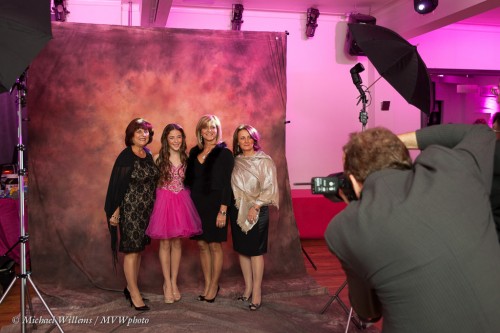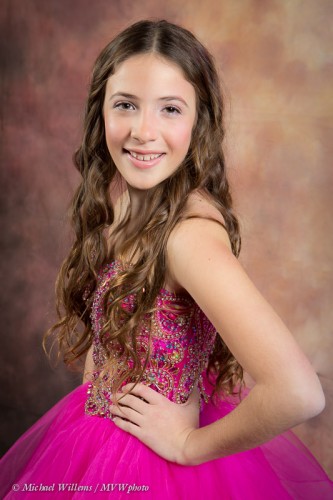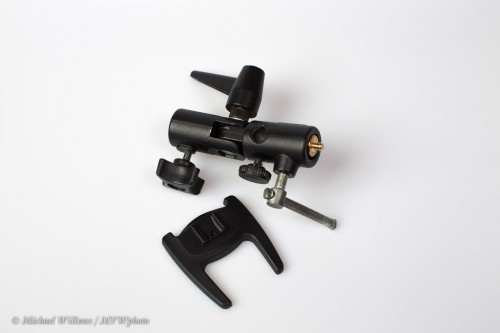A studio setup usually uses big, wall-outlet powered lights (“strobes”) and more.
But here’s me, on a recent shoot:
As you see, I used speedlights there. They are smaller, lighter, easier.
The setup was:
- Camera and a backdrop.
- Two light stands.
- On each light stand, a bracket for mounting umbrella and flash.
- On each light stand, a Pocketwizard (as received) and a Flashzebra cable to connect pocketwizard to flash.
- Pocketwizard on camera (as sender).
All you need to do simple portraits like this:
But the real minimum is this:
1. One light stand
2. One bracket like this:
3. One remote flash to put on that bracket
4. One umbrella to put into that bracket
5. One way to fire the remote flash using TTL (the on camera flash is set to not flash, but to just send “morse code” commands to the remote flash). This local master flash can be a large flash (SB-900, 600EX) on your camera, or on certain cameras like most Nikons and many recent Canons, the pop-up flash.
And that is really all as a minimum!
When using that, you simply mix available light with flash, using the techniques outlined on this blog. Then you can do shots like this, of Dan and Kristen, whose engagement photos I made recently in Hamilton:





Michael, would you normally bump the ISO to say 400? Or will the speedlight be enough power to light a 5-6 ppl shot.
It all depends on the light – and the distance – and the aperture. But yes, 400 ISO gives me more flash power and less battery drain, so I indeed typically do that.
Thanks. I’ve always used your starting guideline of 1/125 and f8. Would you have one of the speedlight a stop lower for group shots?
Again, alas, “it depends”. Yes, perhaps so, if I need more power. The starting point is good, but sometimes due to more distance you need more power. In those cases, either increase the ISO or go to a wider aperture – both of those increase available flash power (but note that shutter speed does not, at long as you are below your flash sync speed).
As well, out of curiosity, where would you have your focus point?
On the eyes!
Whose eyes for a group shot? Does it matter?
The person in the centre – but you line them up so the focal plane is indeed that, a focal plane, so the eyes will all be the same distance, give or take.
Good point. Thanks.
It all depends on the light – and the distance – and the aperture. But yes, 400 ISO gives me more flash power and less battery drain, so I indeed typically do that.